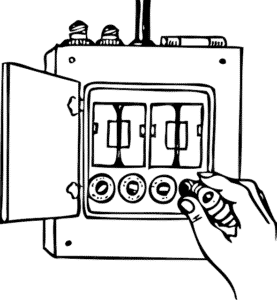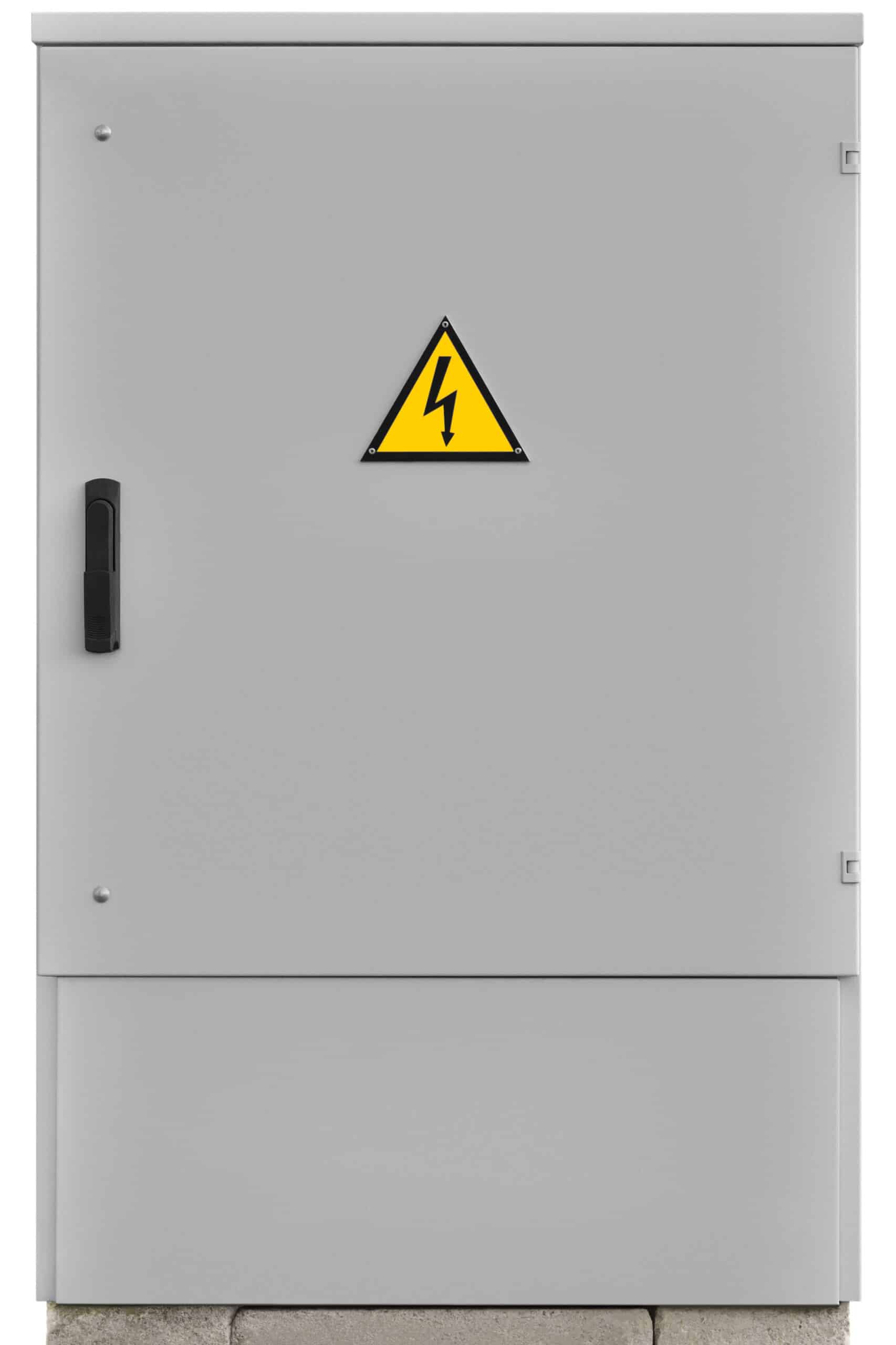F2 Labs offers testing to UL 50 and UL 50E standards for enclosures used in electrical equipment. Our testing verifies protection against environmental conditions such as water, dust, and corrosion, ensuring enclosures meet safety and durability requirements.
F2 Labs can perform UL & CSA certification testing and UL 50 & UL 50E testing for your enclosure. UL 50 applies to enclosures for electrical equipment intended to be installed and used in non-hazardous locations. UL 50E covers additional environmental construction and performance requirements. These standards are applicable for the United States, Mexico, and Canadian markets.
What is an enclosure?
- A surrounding component meant to provide protection to personnel against contact with the equipment enclosed, at least to a degree. It also provides protection to the equipment from various environmental conditions.

UL 50
UL 50 applies to enclosures for electrical equipment intended to be installed and used in non-hazardous locations. This standard is applicable to enclosures for electrical equipment (non-environmental considerations).
- Enclosures for indoor locations, Types 1, 2, 5, 12, 12K, and 13; and**
- Enclosures for indoor or outdoor locations, Types 3, 3X, 3R, 3RX, 3S, 3SX, 4, 4X, 6, and 6P.**
**See definitions of Enclosure Types below.
This standard covers the non-environmental construction and performance requirements for enclosures to provide a degree of protection to personnel against incidental contact with the enclosed equipment. This standard also covers additional environmental construction and performance requirements for enclosures. There are additional environmental construction and performance requirements for enclosures that are intended to be used in conjunction with this standard.
In cases where your products have their own individual standard requirements that vary from those of UL 50, the requirements of the individual product will take precedence. Standards can be difficult to navigate and that’s where our product safety testing services come in. Our expert staff is here to answer your questions and guide you through the process at each step-by-step. Contact us to get in touch with an expert today.
UL 50E
Coverage for the UL 50E is the same as the UL 50. However, the standard covers additional environmental construction and performance requirements for enclosures. In other words, this standard is applicable to enclosures for electrical equipment with environmental considerations.
SCOPE OF UL 50E
1 Scope
1.1 This standard applies to enclosures for electrical equipment intended to be installed and used in non-hazardous locations in accordance with the Canadian Electrical Code, Part I, CSA C22.1, the provisions of the National Electrical Code, NFPA 70, and the provisions of Mexico’s Electrical Installations, NOM-001-SEDE, as follows:
- Enclosures for indoor locations, Types 1, 2, 5, 12, 12K, and 13; and**
- Enclosures for indoor or outdoor locations, Types 3, 3R, 3S, 4, 4X, 6, and 6P.**
**See definitions of Enclosure Types below.
1.2 This standard covers additional environmental construction and performance requirements for enclosures. The general requirements for enclosures are contained in standard CSA C22.2 No. 94.1, UL 50, and NMX-J-235/1-ANCE (See Annex b, Ref. No. 10) or the end-use product standards that are to be used in conjunction with this standard.
1.3 This standard does not cover the requirements for the protection of devices against conditions such as condensation, icing, corrosion, or contamination that may occur within the enclosure or that may enter via conduit or unsealed openings.
1.4 Where an individual product standard contains requirements that are at variance with those of this standard, the requirements of the individual product standard take precedence.
The world of product compliance can be complicated a difficult to navigate, but our expert staff is here to guide you through the process and answer your questions at each step of the way. Contact us to get in touch with an expert today.
Below are the Enclosure Types Per UL 50, 5.8:
protection to personnel against access to hazardous parts; to provide a degree of protection against ingress of solid foreign objects (falling dirt); to provide a degree of protection with respect to harmful effects on the equipment due to the ingress of water (rain, sleet, snow, hose directed water and the entry of water during occasional temporary submersion at a limited depth); and that will be undamaged by the external formation of ice on the enclosure.
protection to personnel against access to hazardous parts; to provide a degree of protection against ingress of solid foreign objects (falling dirt); to provide a degree of protection with respect to harmful effects on the equipment due to the ingress of water (rain, sleet, snow, hose directed water, and the entry of water during prolonged submersion at a limited depth); and that will be undamaged by the external formation of ice on the enclosure.
protection to personnel against access to hazardous parts; to provide a degree of protection against ingress of solid foreign objects (falling dirt and circulating dust, lint, fibers, and flying); to provide a degree of protection with respect to harmful effects on the equipment due to the ingress of water (dripping and light splashing); and to provide a degree of protection against light splashing and consequent seepage of oil and non-corrosive coolants.
protection to personnel against access to hazardous parts; to provide a degree of protection against ingress of solid foreign objects (falling dirt and circulating dust, lint, fibers, and flying); to provide a degree of protection with respect to harmful effects on the equipment due to the ingress of water (dripping and light splashing, and to provide a degree of protection against light splashing and consequent seepage of oil and non-corrosive coolants.
